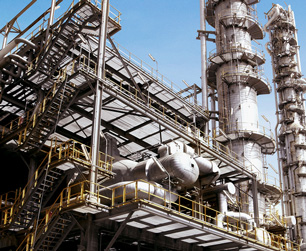Dichloroethanes
| EPA Maximum Contaminant Level (MCL) |
1,2-Dichloroethane | 0.005 mg/L |

Dichloroethanes are volatile organic chemicals with a similar chemical makeup. They are widely used in industry:
-
1,2-Dichloroethane (also known as ethylene dichloride) is used as a refrigerant, an extraction and cleaning solvent, and in the manufacture of pharmaceuticals, artificial pearls and other organic chemicals, notably vinyl chloride.
-
1,1-Dichloroethane is also used in the manufacture of chemicals, and as a solvent in paint removers, a degreasing and cleaning agent, and in metal ore processing. It was at one time used as an anesthetic.
1,2-Dichloroethane is frequently detected in ground water near industrial areas. Dichloroethanes have been detected in trace amounts in both public water supplies and private wells.
Health Effects of Dichloroethanes
The World Health Organization lists “anorexia, nausea, abdominal pain, irritation of the mucous membranes, dysfunction of liver and kidney and neurological disorders” as symptoms experienced by workers exposed to 1,2-dichloroethane. Studies have shown that workers exposed have experienced increased incidences of cancer, but those workers were also exposed to other organic chemicals. The International Agency for Research on Cancer (IARC) classifies dichloroethane as a “possible human carcinogen.”
1,1-Dichloroethane has low acute toxicity, but may affect the central nervous system in large doses. There is limited evidence from animal studies that it may be carcinogenic, and the EPA classifies it as being a “possible human carcinogen.”
Water Treatment for Dichloroethanes
The EPA recommends granular activated carbon (GAC) in combination with packed tower aeration (an air stripping method) for the treatment of dichloroethane. Lenntech reports that activated carbon alone has a “moderate probability” of adsorbing dichloroethane.
Source: EPA (1), EPA (2), WHO, IARC, TOXNET, Lenntech, Photo: WikiMedia, author: Secl
Site Index
Filtration Systems
- Aeration for Iron & Sulfide
- Backwashing Filters
(whole house & well units)
- Chlorine & Chemical Injectors
- Countertop Water Filters
- Garden Hose Filters
- Reverse Osmosis, Residential
- Reverse Osmosis, Commercial
- Shower Filters
- Specialty Filters
- Ultraviolet Systems
- Undersink Filters
- Water Softeners
- Whole House Filters
Cartridges
Parts
- Replacement Parts
- Faucets
- Filter Media
- Fittings
- Housings
- O-rings
- Pumps
- Pura UV
- R.O. Parts
- R.O. Tanks
- R.O. Booster Pump
- VIQUA UV